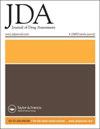Management of specialty drugs, specialty pharmacies and biosimilars in the United States
IF 2.4
引用次数: 2
Abstract
Abstract Background: Specialty medicines continue to increase as a percentage of spending with biologics representing a large portion of specialty spending. Health plans expect to adjust their formularies to maximize expected savings from biosimilars. Objectives: A better understanding of health plan management of specialty pharmacy (SP), SP products and biosimilars. Methods: Online survey of health plan executives on: roles and plan information, specialty pharmacies and specialty pharmaceuticals, expected biosimilar coverage/restrictions/copays. Results were compared with prior surveys (changes >2% reported). Results: Survey completed by 85 respondents: 42.9% were senior officers, 13.1% regional, 8.3% payor specific, 1.2% therapeutic area specific; 36.9% worked for healthplans, 13.1% PBMs, 9.5% IDNs, 2.4% PPOs/IPAs, 1.2% Government. Plans were national = 29.9%, regional = 24.7% or local = 22.1% and cover multiple member types: commercial (58.6% = FFS, 77.8% = HMO/PPO), Medicaid (Traditional = 27.8%, HMO/PPO = 72.3%), Medicare (71%, PDP-only = 51%), Employer/Self-funded = 79% and IDN (43.6%, 340B Qualified = 43.8%); 45.6% reported the plan’s PBM as their SP provider and providers were restricted by 58% ↓23% with plans restricting products: 58% to those under contract, 11.6% for those available through multiple SPs, 10.1% allow any SP handling a product and 4.4% carving out their SPs. Compared with last year, providers shifted approximately 6% from independents to internally provided and currently 45.6% are PBM owned, 38.2% health plan owned, 25% independent and 13.2% hospital/IDN owned. SP products continue to move from fixed to percentage copays with more plans determining by group and benefit design. Plans covered clinician-administered products under the medical benefit (36.8%↓7.3%), 2.9% under the pharmacy benefit; the remainder used price and plan design. Biosimilar use expected for all reference product indications 58.8%↓5.7%, 31.4%↓13.5% will restrict to approved indications and 9.8% will use indication as the basis for copay. 10%↓15% expect the biosimilar to be the only product available, copays are expected to be discounted off the innovator 58%↓10.1% and 32%↓4.9% to vary based on approval timing. Biosimilar education provided through: different copays = 64.7%, prescriber and patient mailings (76.5%↓4.2% + 58.8%), prescriber and patient calls (51%↓10.6% + 27.5%↑4.1%). Biosimilar savings are expected to be 63.5% this year; in 5 years, 66% of savings are expected to be greater than 20%. Conclusions: Costs associated with specialty pharmacies and specialty pharmacy products have shifted and are expected to grow with some relief coming from biosimilars.美国专业药物、专业药房和生物仿制药的管理
摘要背景:专业药物在支出中所占的比例继续增加,生物制品在专业支出中占很大一部分。健康计划预计将调整其配方,以最大限度地提高生物仿制药的预期节约。目的:更好地了解专科药房(SP)、SP产品和生物仿制药的健康计划管理。方法:对健康计划执行人员进行在线调查,内容包括:角色和计划信息、专业药店和专业药品、预期生物仿制药覆盖率/限制/自付垫底费。将结果与之前的调查进行比较(报告的变化>2%)。结果:85名受访者完成了调查:42.9%为高级官员,13.1%为地区官员,8.3%为特定付款人,1.2%为特定治疗领域官员;36.9%为健康计划工作,13.1%为PBM工作,9.5%为IDN工作,2.4%为PPO/IPA工作,1.2%为政府工作。计划是全国性的 = 29.9%,区域 = 24.7%或本地 = 22.1%,涵盖多种会员类型:商业(58.6% = FFS,77.8% = HMO/PPO)、医疗补助(传统 = 27.8%,HMO/PPO = 72.3%),医疗保险(71%,仅PDP = 51%),雇主/自筹资金 = 79%和IDN(43.6%,340B合格 = 43.8%);45.6%的人将该计划的PBM报告为其SP提供商,58%的提供商受到限制↓23%的计划限制产品:58%的计划限制合同下的产品,11.6%的计划限制通过多个SP提供的产品,10.1%的计划允许任何SP处理产品,4.4%的计划取消其SP。与去年相比,提供者从独立提供者转变为内部提供者,目前45.6%为PBM所有,38.2%为健康计划所有,25%为独立提供者,13.2%为医院/IDN所有。SP产品继续从固定自付额转向百分比自付额,更多计划由团体和福利设计决定。计划涵盖医疗福利下的临床医生管理的产品(36.8%↓7.3%),在药房福利下为2.9%;其余采用价格和方案设计。所有参考产品适应症预期使用生物仿制药58.8%↓5.7%、31.4%↓13.5%将仅限于批准的适应症,9.8%将使用适应症作为自付垫底费的基础。10%↓15%的人预计生物仿制药将是唯一可用的产品,预计创新者的自付垫底费将打折58%↓10.1%和32%↓4.9%根据批准时间而变化。通过以下方式提供生物相似性教育:不同的共付额 = 64.7%,处方医生和患者邮件(76.5%↓4.2%+58.8%)、处方医生和患者电话(51%↓10.6% + 27.5%↑4.1%)。今年生物仿制药预计将节省63.5%;5年后,预计66%的储蓄将超过20%。结论:与专业药房和专业药房产品相关的成本已经发生了变化,预计还会随着生物仿制药的缓解而增长。
本文章由计算机程序翻译,如有差异,请以英文原文为准。
求助全文
约1分钟内获得全文
求助全文

 求助内容:
求助内容: 应助结果提醒方式:
应助结果提醒方式:


